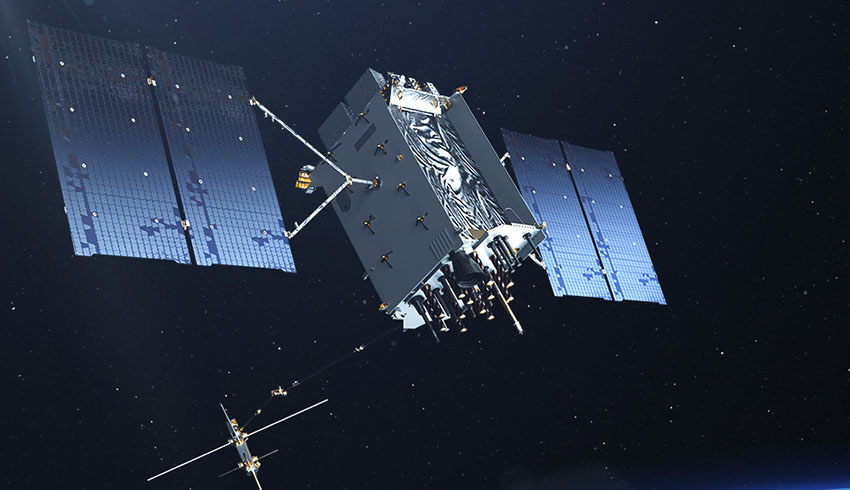
Lockheed Martin engineers at Lockheed Martin's Launch and Checkout Facility near Denver declared they had full control of GPS III Space Vehicle 02 (GPS III SV02) shortly after the satellite's separation from its United Launch Alliance (ULA) Delta IV rocket booster.
The satellite, nicknamed "Magellan" by the Air Force, began its rocket ride to space with a 9:06am ET launch from Cape Canaveral Air Force Station.
GPS III SV02 is now climbing towards its operational orbit about 12,550 miles above the Earth under the power of its own liquid apogee engines. Engineers at Lockheed Martin Space's Waterton, Colorado facility are commanding the satellite using elements of the GPS Next Generation Operational Control System (OCX) Block 0.
Johnathon Caldwell, Lockheed Martin Space's vice president for navigation systems, said, "GPS III SV02 is receiving and responding to commands just as planned. In the days ahead, we'll finish orbit raising to our operational slot and then send the satellite commands telling it to deploy its solar arrays and antennas."
GPS III SV02 is the second GPS III satellite designed and built by Lockheed Martin to help the Air Force modernise today's global positioning system (GPS) constellation with new technology and capabilities.
GPS III satellites provide three times greater accuracy and up to eight times improved anti-jamming capabilities. GPS III also provides a new L1C civil signal, compatible with other international global navigation satellite systems, like Europe's Galileo.
"Once we are set up, we'll begin on-orbit checkout and tests, including extensive signals testing with our advanced navigation payload," Caldwell added.
GPS III SV02 will be the second GPS III satellite in orbit and the second GPS III satellite now being commanded from Lockheed Martin Space's facility.
On 23 December 2018, the Air Force launched the first GPS III satellite. Nicknamed "Vespucci", GPS III SV01 underwent months of checkout and thorough testing of its advanced, new navigation payload provided by Harris Corporation.
With GPS III SV01 and SV02 now on orbit, GPS III satellites continue to roll off the production line at Lockheed Martin's advanced $128 million GPS III processing pacility near Denver. On 27 May, the Air Force declared the GPS III SV03 available for launch (AFL) and had the company place it into storage waiting for a launch date. GPS III SV04-08 are now in various stages of assembly and test.
In all, Lockheed Martin is under contract to build up to 32 next-generation GPS III/IIIF satellites for the Air Force. Additional "IIIF" capabilities will begin being added at the 11th satellite. These will include a fully digital navigation payload, a Regional Military Protection capability, an accuracy-enhancing laser retroreflector array, and a search and rescue payload.
Lockheed Martin is proud to be a part of the Air Force's GPS III team. The GPS III team is led by the Production Corps, Mid-Earth Orbit Division, at the US Air Force Space and Missile Systems Center. Air Force Space Command's 2nd Space Operations Squadron (2SOPS), based at Schriever Air Force Base, Colorado, manages and operates the GPS constellation for both civil and military users.
Receive the latest developments and updates on Australia’s space industry direct to your inbox. Subscribe today to Space Connect here.









